Conserving Australia
“Heaps of wildlife, biodiversity, beauty, and adventure”
I recently travelled to Australia to gain first-hand insight into the raging bush fires that have been afflicting many of the territories in and around Australia. Recent news coverage has portrayed Australia as a burning inferno of ash, destroyed land, wounded animals, and treacherous deaths. The sadness of such loss is irrevocable. And, although much of the outside world is shying away from attempts to visit the continent, vast areas of Australia have been largely unaffected. Another top concern is the drastic decline in tourism, which has had negative effects on small and local business relying heavily on the boom that tourism provides.
In Melbourne, I attempted to uncover what firefighters had to say regarding the current state of affairs. Unfortunately, as much as they were eager to speak on the matter, they were reluctant and informed me that the government had cracked down on any further commenting regarding the fires, including any official and unofficial statements from fire departments. Instead of pressing further, I made my way east to explore a few animal rescue and conservation sanctuaries. Here, there were plenty of rescue Koalas and Wallaby who had been relocated due to loss of land, vegetation, and/or brush fire. The efforts of these extraordinary individuals have kept the wildlife safe and thriving despite the natural and unnatural occurrences that displace much of the flora and fauna surrounding farmland and major metropolises. It is crucial that these conservational efforts continue, as Australia is home to more than one million species of plants and animals, many of which are unique.
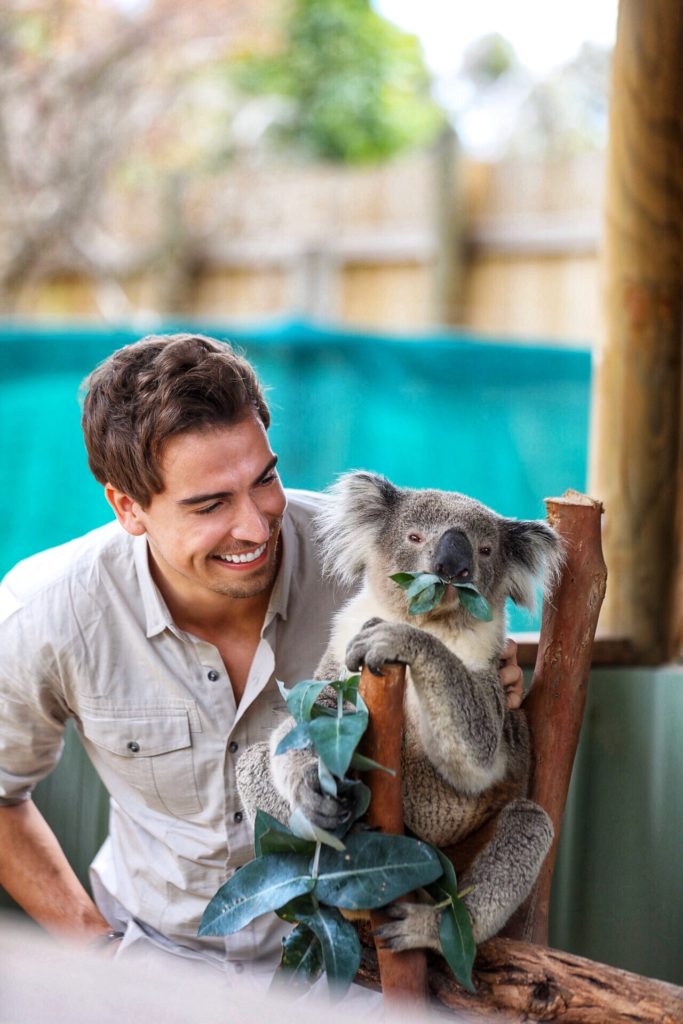
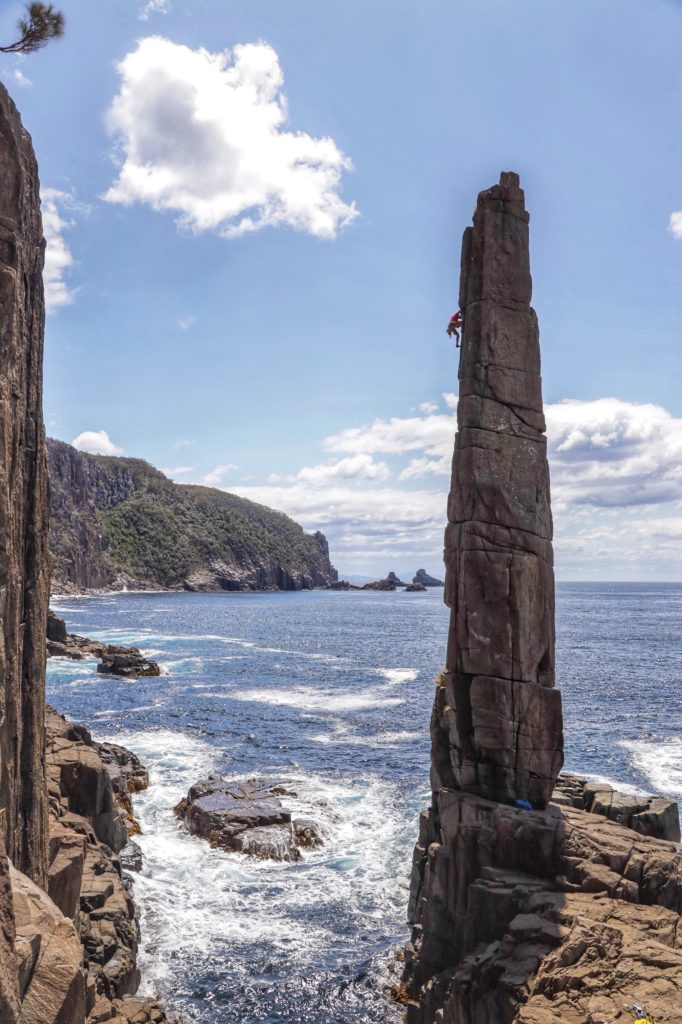
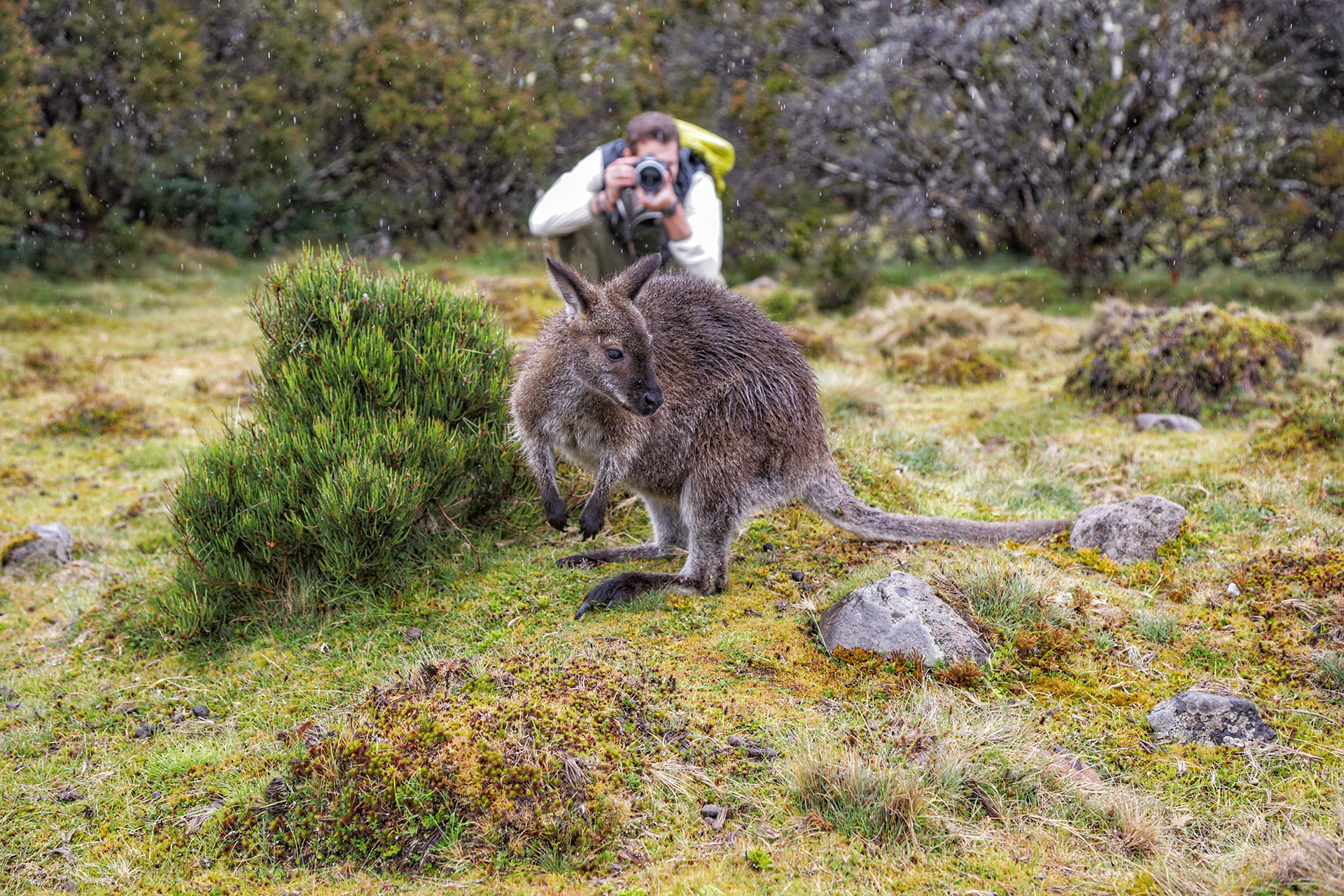
Prior to my arrival in Melbourne, I adventured through Tasmania, climbing massive stone monoliths perched on the stunning Tasman Peninsula, and fended off heavy rain and crosswinds in the mountainous regions of the Northern Tasman Wilderness. No signs of wildfire in the area, just swaths of golden meadows and lush forest for as far as the eye could see. Cradle Mountain alone provided me with an array of wildlife, booming with Wombats, Wallabies, Tasmanian Devils, and Echidnas. The rain had little effect on our furry friends. In fact, it brought the wilderness alive as families of Wallaby hopped and jolted across meadows with their young, and Wombats prodded the wet soil for food. The weather on our approach to the summit of Cradle Mountain was unpredictable. One minute it was clear, the next cloudy, and then a second later, a full blown rain storm. Around my ankles and under my drenched socks I picked off relentless leeches who favored a meal of fresh coursing blood. The sheer beauty of the mountain was breathtaking, even under conditions less favorable than I anticipated. The clouds and fog added a swirling and ominous presence around the smaller plateaus, reminding the weary adventurer to keep moving.
In the Northern Territory, more specifically Darwin, I was met with perhaps the most unexpected series of events that would define my trip to Australia. The questions I sought in regards to the fires, and the quandary and inquisition I had into the wildlife, land, and customs of the indigenous Australians were brought to my attention by a group of adventurous spirits that work closely with conservation and crocodile rescue and recovery. Jock Purcell, an extraordinary pilot and tour guide, and “Rowdy” Sutton, an experienced tour guide, met me outside Darwin for an excursion into the Sweets Lagoon wetlands in search of giant reptiles. The mission was to shed some light on the efforts their team advocated in preservation of these wild animals. The two work with Matt Wright, star of National Geographics
“Monster Croc Wrangler” series. Matt, a Darwin based world-wide celebrity known for his conservational efforts, tracks down, captures and transports a diverse range of animals in need of help, such as crocodiles and snakes. His intention is to combat human-animal conflict globally and highlight the importance of humanity prioritizing the environment and wildlife. Needless to say, these were the guys I was meant to meet.
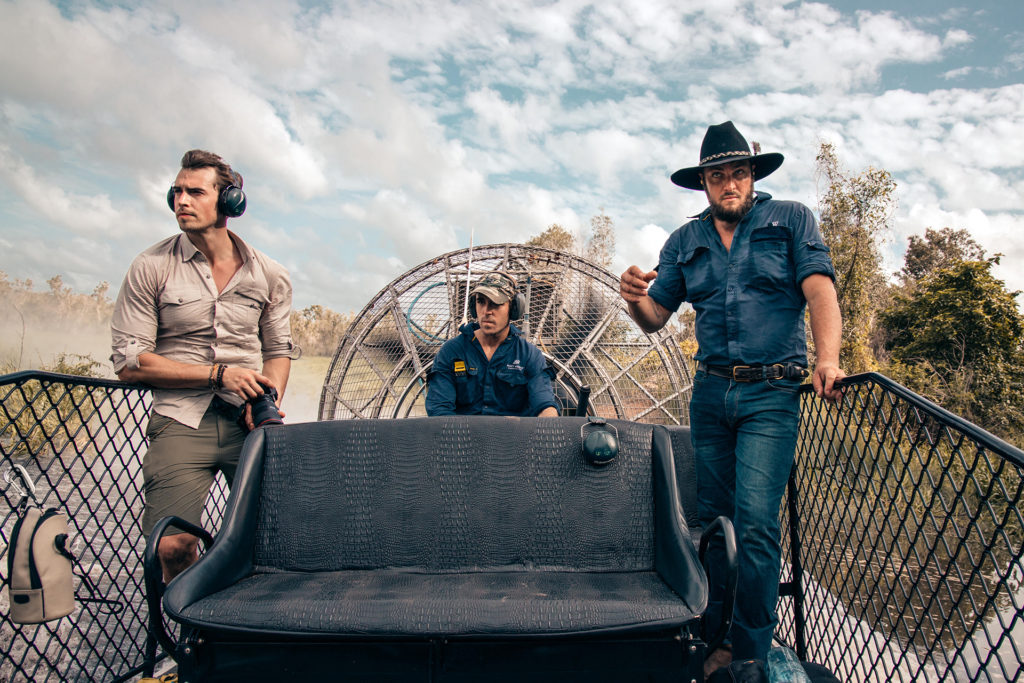
On our drive to the airboat, stationed at the Top End Safari Camp that would take us to Sweets Lagoon, Rowdy recounted his recent return from volunteering his time to help combat a fire in NSW. The inferno, just outside his family’s home, he described as a catastrophic ordeal with embers the size of his forearm floating past his face and a complete blackout of soot and ash. He had never seen anything like it, or as devastating.
Many people are of the opinion it is imperative that the people of Australia continue to listen to the old ways and learn from the indigenous Australians and their preservation and practice of land management. The aboriginal people believe strongly in the connectivity and spirituality of all land around them. In fact, they have numerous beliefs attached to land that differ among people and regions. Of particular interest to me was the idea of their controlled burns. Indigenous Australians, for thousands of years, have practiced the use of controlled burning to induce gestation and spread further fertilization of plant-life throughout Australia. Certain plant species require the advent of heat in order to produce seeds, continue growth, and repopulate. Indigenous Australians are masters of controlling and maintaining this natural process.
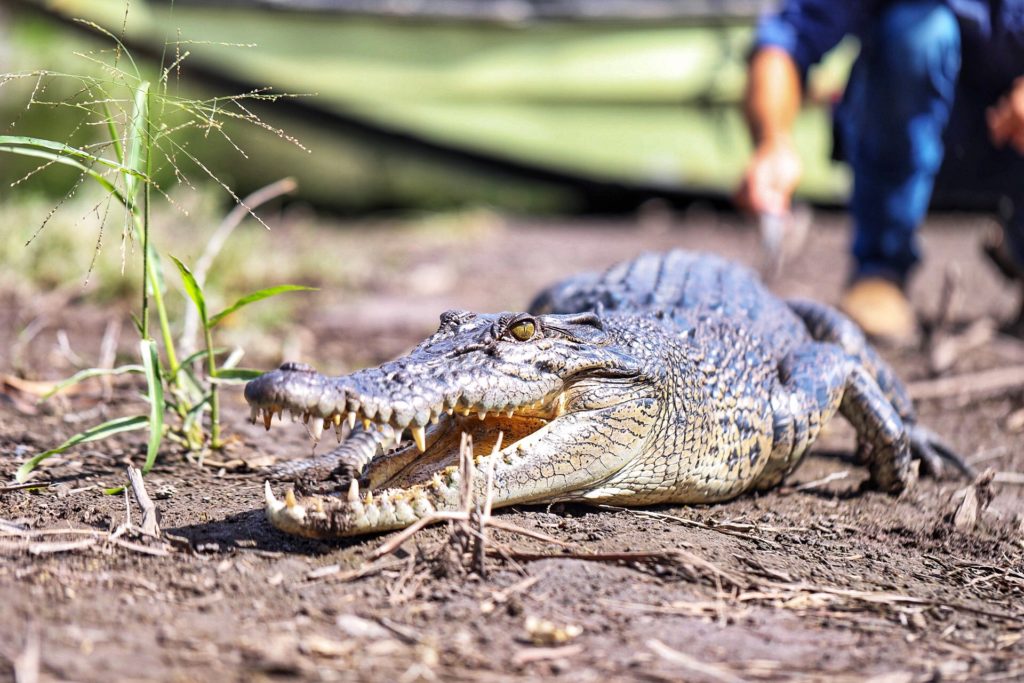
On the air boat, Jock expertly guided us through Sweets Lagoon. Here, we were fortunate enough to spot wild saltwater crocodiles. Jock docked our boat on a muddy inlet in the marshes and I hoped out with an eager finger on my cameras shutter button. A female croc emerged from the water and made her way across the muddy bank toward myself and Jock. She found us particularly interesting, and made a slow and inquisitive, yet determined, crawl toward us. After our photo op, we hopped back aboard the Airboat and set off. Jock explained that a crocodile is one of the few species that will actively hunt a human and could move their full body length in a second, which is why it was extremely important to keep a tally on rogue crocs that inhabited populated areas. Relocation in this instance is paramount. Which brings me to the introduction of celebrity croc, “Tripod”, also featured on “Croc Wranglers”.
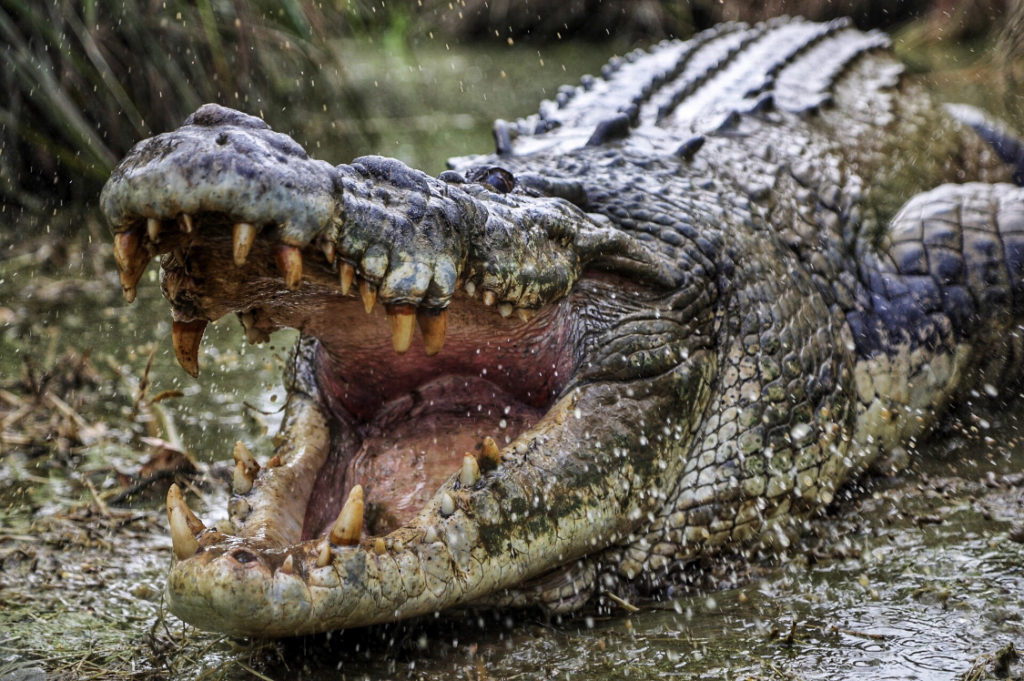
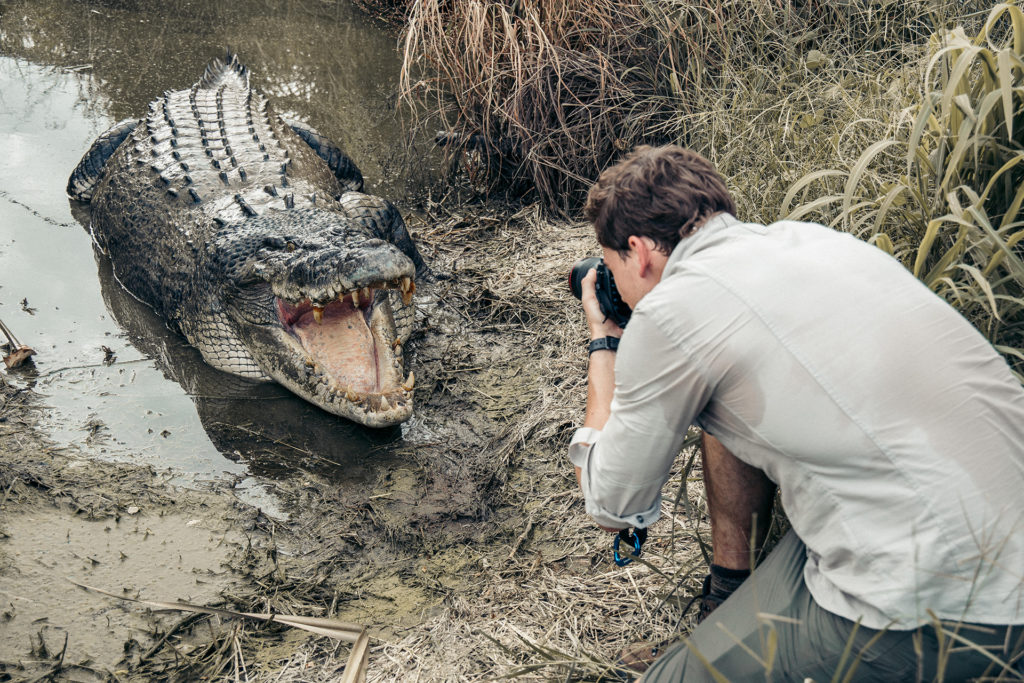
Tripod, aptly named because of his missing right front leg, was caught in the mid-1980s near the Daly River mission on the Daly River. The indigenous community there had spotted Tripod lurking in the waters where many of the children swam. To avoid any potential fatalities, the community requested the crocs speedy removal. Weighing around one ton, and 14.5 feet long, the 30- 40-year-old mega croc was brought to a local farm where he could be closely monitored. It wasn’t until five years ago, that the 70-year-old Tripod was relocated to the Top End Safari Camp by Matt Wright, where he currently resides and lives comfortably. Crocs live as long as humans, meaning this old Croc had many more years left, and from my close experience with the giant, it didn’t seem like he was any worse for the wear. At the Top End Safari Camp, I was only about two feet away when I heard the thunderclap of his jaws clamping down on a meal. That was enough to keep me on my toes. I raised my camera to get a photo. Jock had leaned in to give me a quick fact, reporting that saltwater crocodiles have the strongest bite force in the animal kingdom, ringing in at 3,700 pounds per square inch. Despite the warning, I kept my resolve. Tripod seemed harmless enough, or perhaps that was simply my own internal justification for getting so close to get the “perfect” shot.
My intended purpose for traveling to the Land Down Under was one of continued awareness, understanding of cultural significance and its impact and relation to the modern world, the uncontrolled and wild effects of roque fires and its havoc on local industries, wildlife, and land, and the continued perspective of viewing the world from a place of deeper understanding rather than superfluous media exposure that often fails to capture the truth behind the facts. Australia indeed requires our attention, if not for relief in its current condition, then for its importance as a uniquely biodiverse continent containing a plethora of natural wonders and species, and an indigenous community that spans some of the oldest people presiding on our planet. In fact, I left Sweets Lagoon, in a small helicopter, pondering more questions than I had answers for, spurring the inevitable notion that I would return.
FURTHER INFORMATION ON LODGING AND ADVENTURE COMPANIES
TASMANIA
https://www.cradlemountainlodge.com.au
DARWIN
http://mattwright.com.au/top-end-safari-camp/
https://www.mindilbeachcasinoresort.com.au


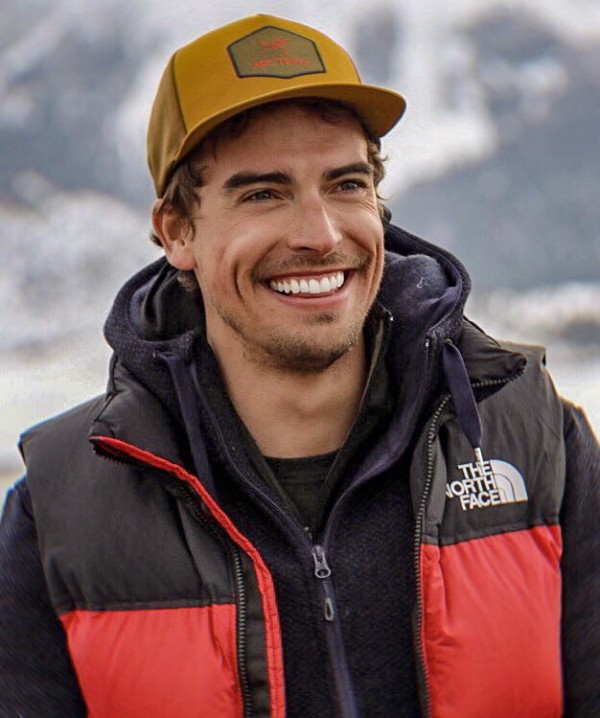
 Rich Manley is a world-wide adventurer and explorer. Inspired by his late grandfather, who was a traveling doctor, adventurer, and magician, Rich explores the globe by following in his grandfathers footsteps.
Rich Manley is a world-wide adventurer and explorer. Inspired by his late grandfather, who was a traveling doctor, adventurer, and magician, Rich explores the globe by following in his grandfathers footsteps.
